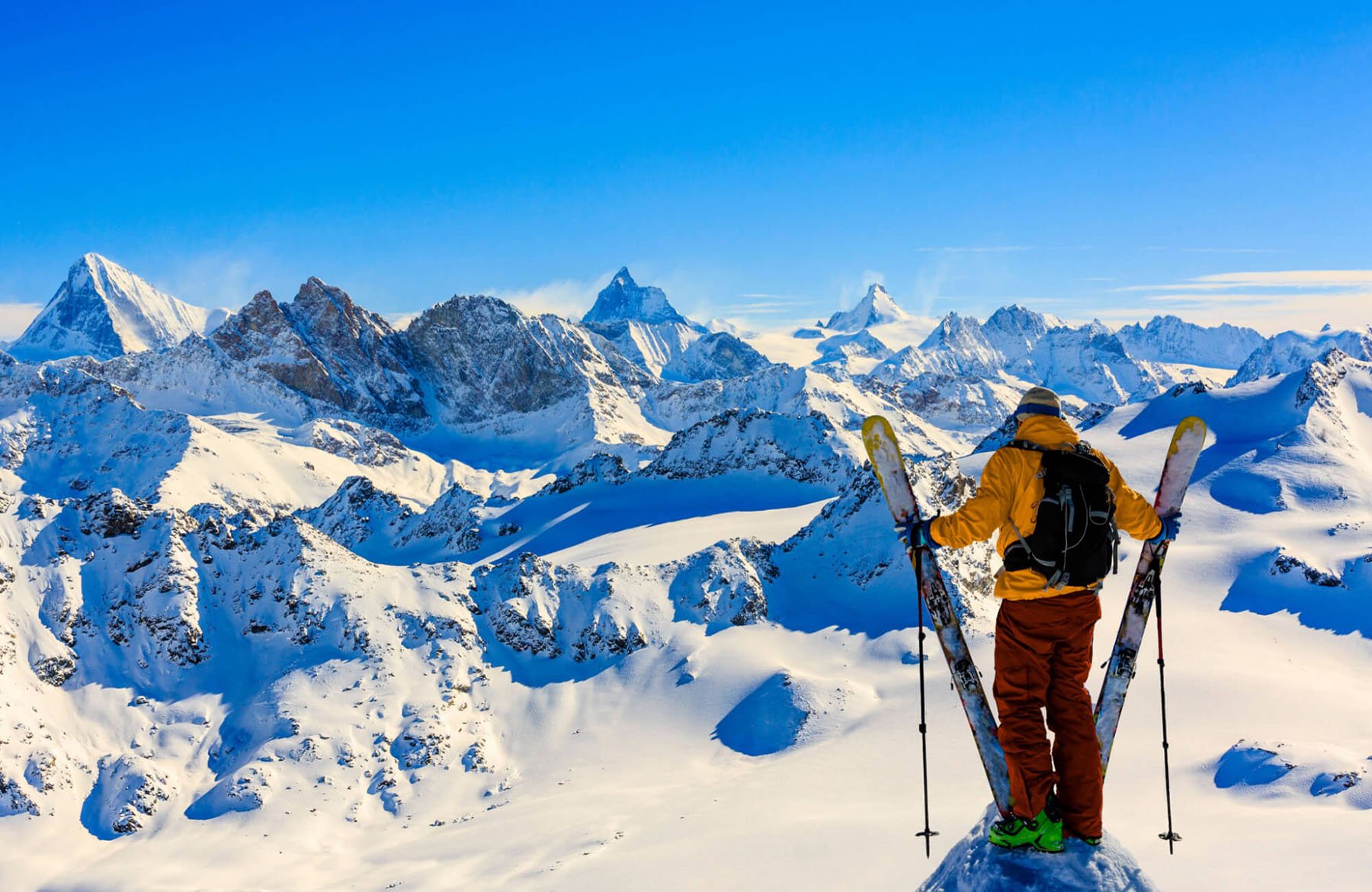In the past, ski touring was exclusively done, or rather was a necessity for people living high up the mountains. In last 20 years, the popularity of this beautiful sport has skyrocketed and nowadays, many more people do this sport. If you're one of them, then you know that picking the right skis is essential.
Touring skis by specifications
Backcountry skis are lighter which makes the hiking up the mountain much easier (using skins), but they also perform well while skiing downhill. Getting your head around all the factors and specifications of skis can be hard. But don't worry, we'll guide you through.
Length
Ski touring skis are shorter than the downhill ones. Therefore, they're lighter and more manoeuvrable. This is especially true at the ascent, while shorter skis pose an advantage in steeper terrain.
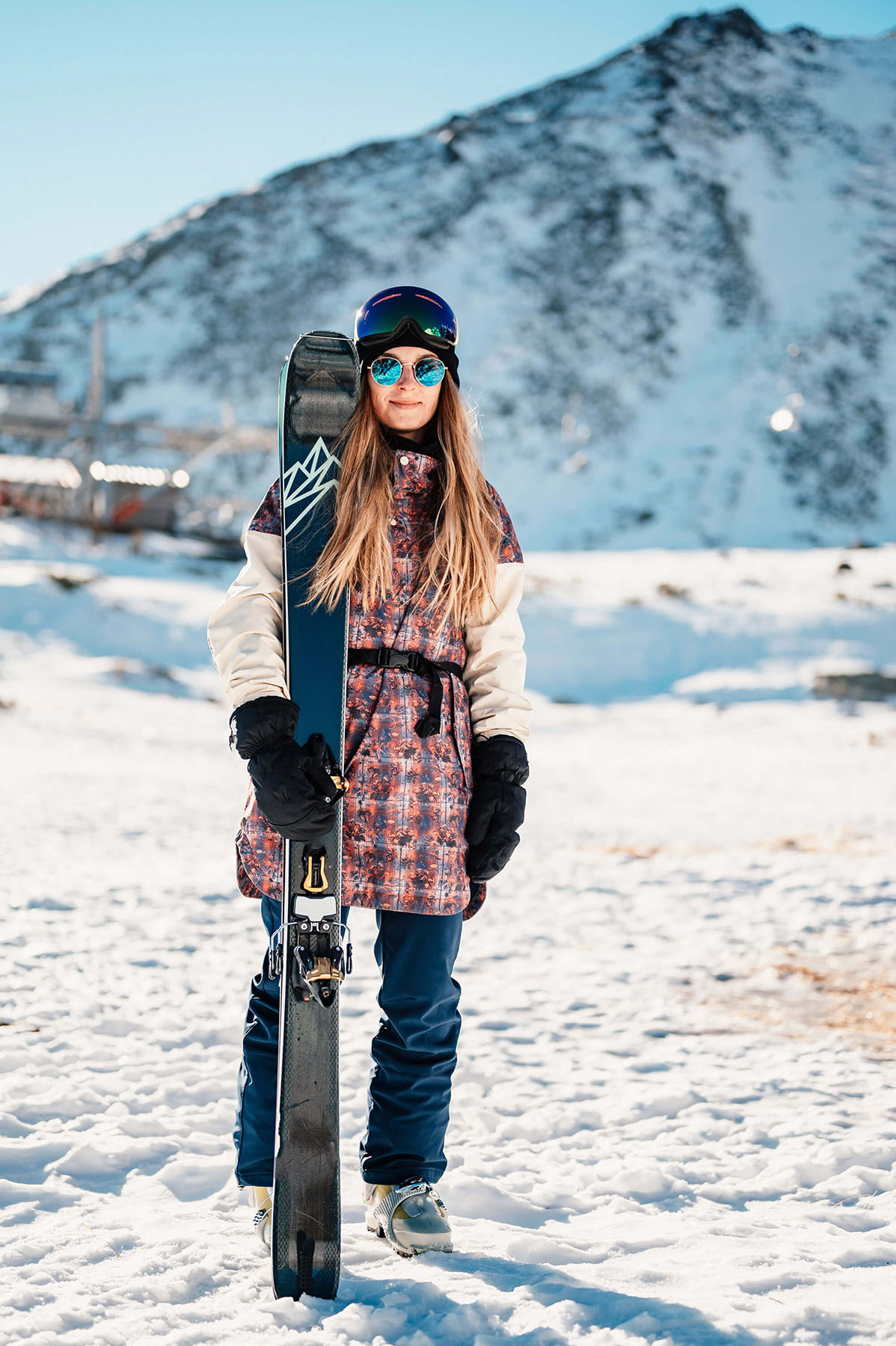
On the other hand, skis too short can have negative impact on going downhill, and that's why you have to pay extra attention to picking the right size according to your skiing preferences.
MUZIKER TIP:
Longer skis make you more stable while riding fast, but shorter skis are fast and easier to control.
Width
How does a ski tackle deep or ungroomed snow depends on its width. The wider the ski is, the smoother the ride. Also, they're more reliable in rough terrain and adaptable in ever-changing conditions. However, narrower skis are lighter, thus they're easier to control, they perform well while ascending, making a long ski trip and riding through tight trails.
Radius
Most of the modern touring skis are in the shape of an hourglass - a ski is thinner at the binding and wider at its tip and tail. This shape determines its radius - the more the shape resembles an hourglass, the lesser the radius is.
Backcountry skis mostly come with medium radius - 15-21 m. Racing skis are an exception, since their radius is about 24 m (sidecuts are much less prominent).
A view from above on a ski tourer skiing downhill in a deep snow
Good to know:Lower radius makes turning easier, greater radius generates better stability on skis.
Camber vs. rocker type
”Camber” means: that a ski is angled at its bottom, so the highest point is at the middle of the ski, therefore the pressure is put on it's tip and a tail, which enables to make the most of the edges while taking corners.
By adding a “rocker”, the surface of the ski that touches the snow is more centred. This results in shortening the effective length of the edges, therefore can be controlled in a deeper snow.
Front rocker, also known as an “early-rise” tip, makes entering the corner easier, and it adds more flexibility to the skis. Rear rocker prevents a ski to stuck at the end of the corner.
Used materials and their properties
A material that a ski is made of, greatly affects its performance on snow. Touring skis are meant to be light, durable and flexible.
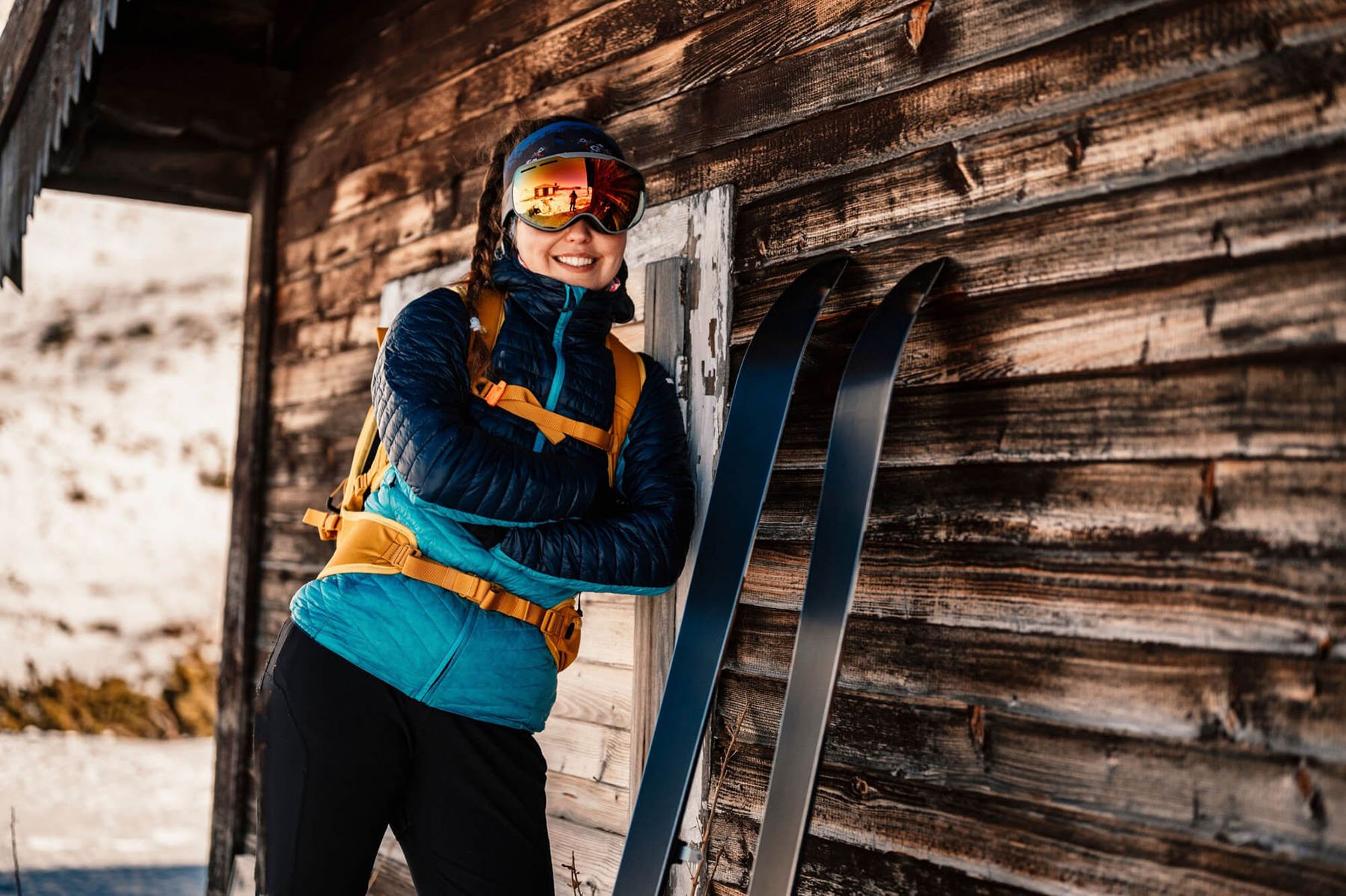
Core of the touring skis
In most cases, the ski core is made of extra light wood, such as poplar, paulownia or balsa.
The material that encompasses the core is also greatly affecting the skis' performance. The most used materials are light - fibreglass, titanal or carbon.
Especially high-end skis, e.g. racing or premium backcountry skis, are usually made using sandwich technology with sides: each material is layered by hand which guarantees a high-precision manufacturing.
The key is the right ratio between lightweight and durability - to make it easy to ascend the mountain with the skis, but also to make the downhill ride an unforgettable experience.
Touring skis according to skier preferences
Once you change the chairlift for your own feet that take you to a mountain top, you're becoming a hiker with skis, a.k.a. ski tourer. As a beginner, you have to firstly get to know all the possibilities of this activity, so you need more universal skis. We've already covered beginner's guide on essential gear in our article on technical specifications of skis.
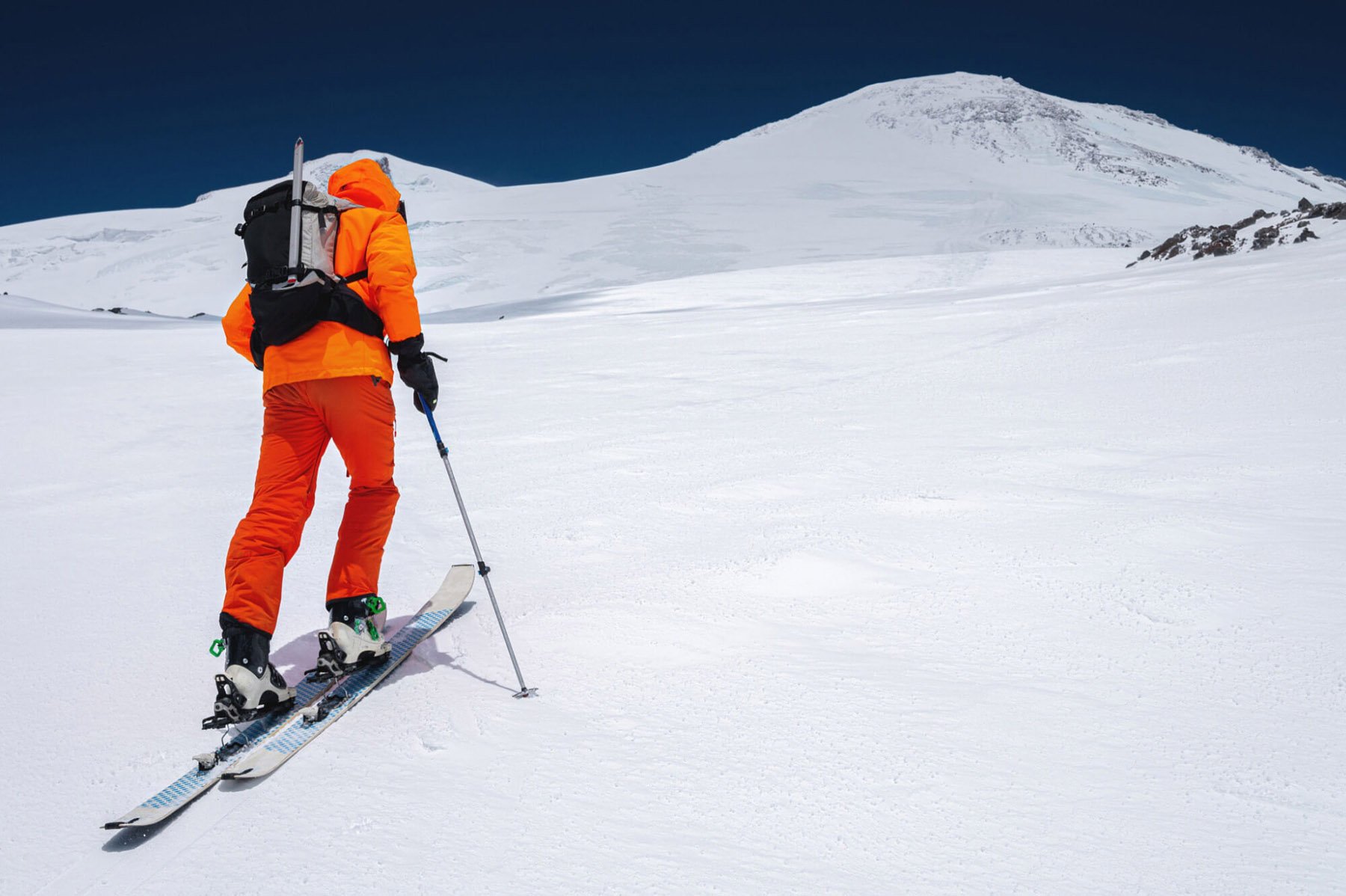
As you're becoming more skilled, you're figuring out what thrills you more - the challenge of hiking up the mountain? Enjoying a downhill ride in a fresh powder? Or you want to get on a mountain top as soon as possible? All of this directly affects the choice of the skis.
Skis for ascending
Do you love to gain altitude and enjoy the long trips? Pick skis that are made for ascending the mountain. They're shorter and should reach up to your chin at least.
They're light (one ski weights around 1000 g), fast and rather narrow, with the width of about 80 mm. These skis are stable enough and easy to control on a solid, groomed slope. However, advanced technical skills are needed in deep snow. Take a look at Hagan pure 83 for instance.
Skis for downhill - freeride skis
Are you bored by the freeride ski runs in resorts? If you love downhill rides with ungroomed terrain and ascending is just a mean how to get to them, pick the freeride skis.
They're longer - probably as high as you are, with a width about 95 to 105 mm. They're also heavier (one ski weights 1500+ grams) and more solid what makes them more universal - they can handle fresh deep powder, ungroomed terrain, heavy snow or a variety of drops. Black Crows Camox skis just check all those boxes.
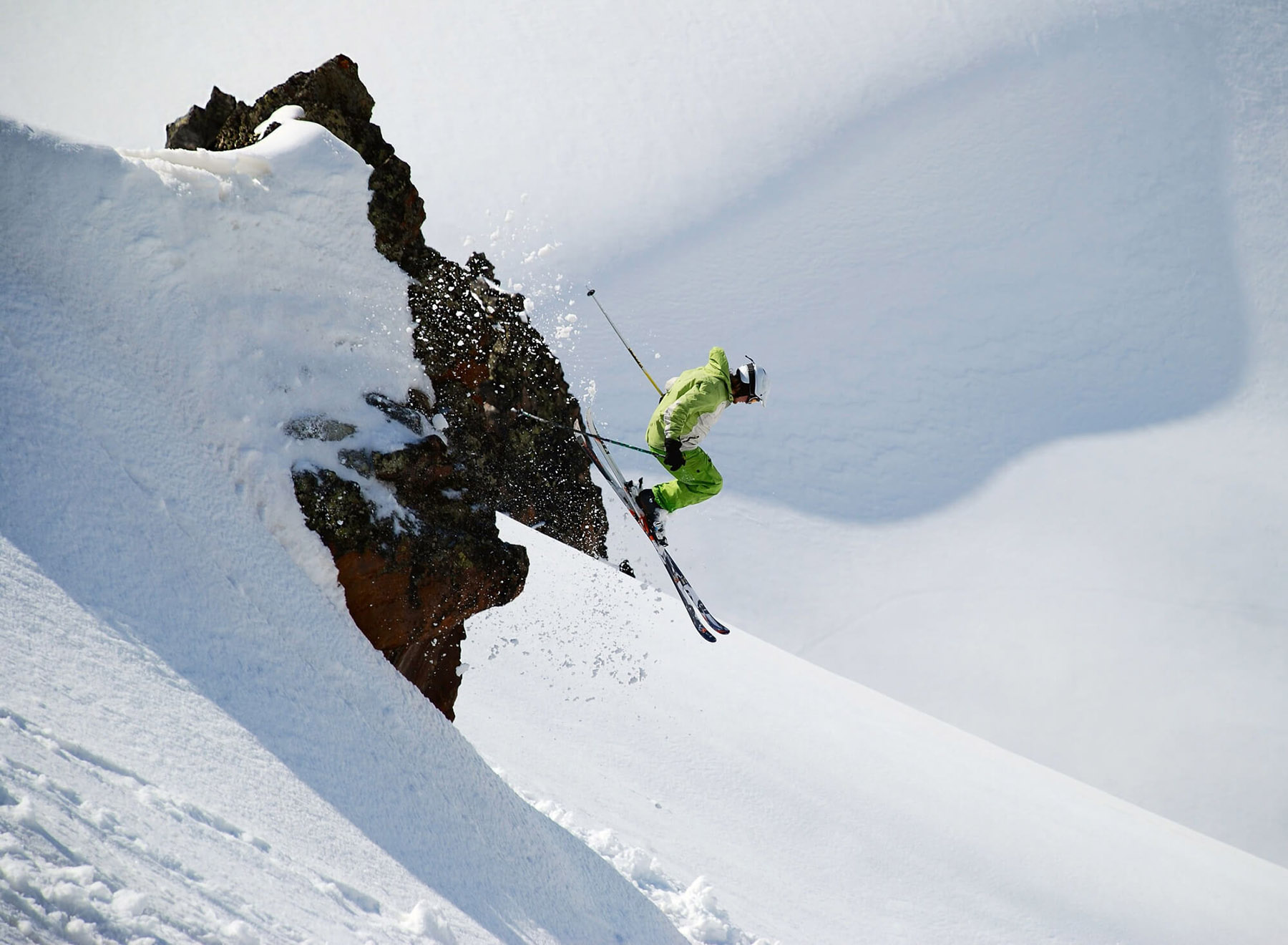
All-round skis
Not decided whether you like ascent or descent more? No worries! Get yourself all-round skis and you'll get universal and well-balanced skis. They're capable to perform well in any kind of conditions up on a mountain. The width of these universal skis is about 80 mm (1200–1300 g). Skis should be shorter by 5 to 10 cm than you are. Scott Superguide give you all of this.
Racing skis
During summer, you do trail running or any other endurance sport, and you really enjoy the physical challenge? While doing backcountry skiing, do you hike and ski down as fast as possible, or you're considering taking place in a race?
If you've answered yes to all the questions and you'll need backcountry skis, which are long (add +10 cm to your height), ultra light (650 - 850 g) wide 65 - 75 cm. If the speed is the most important aspect for you, then racing skis will provide you with comfort while being extra light on top of that.
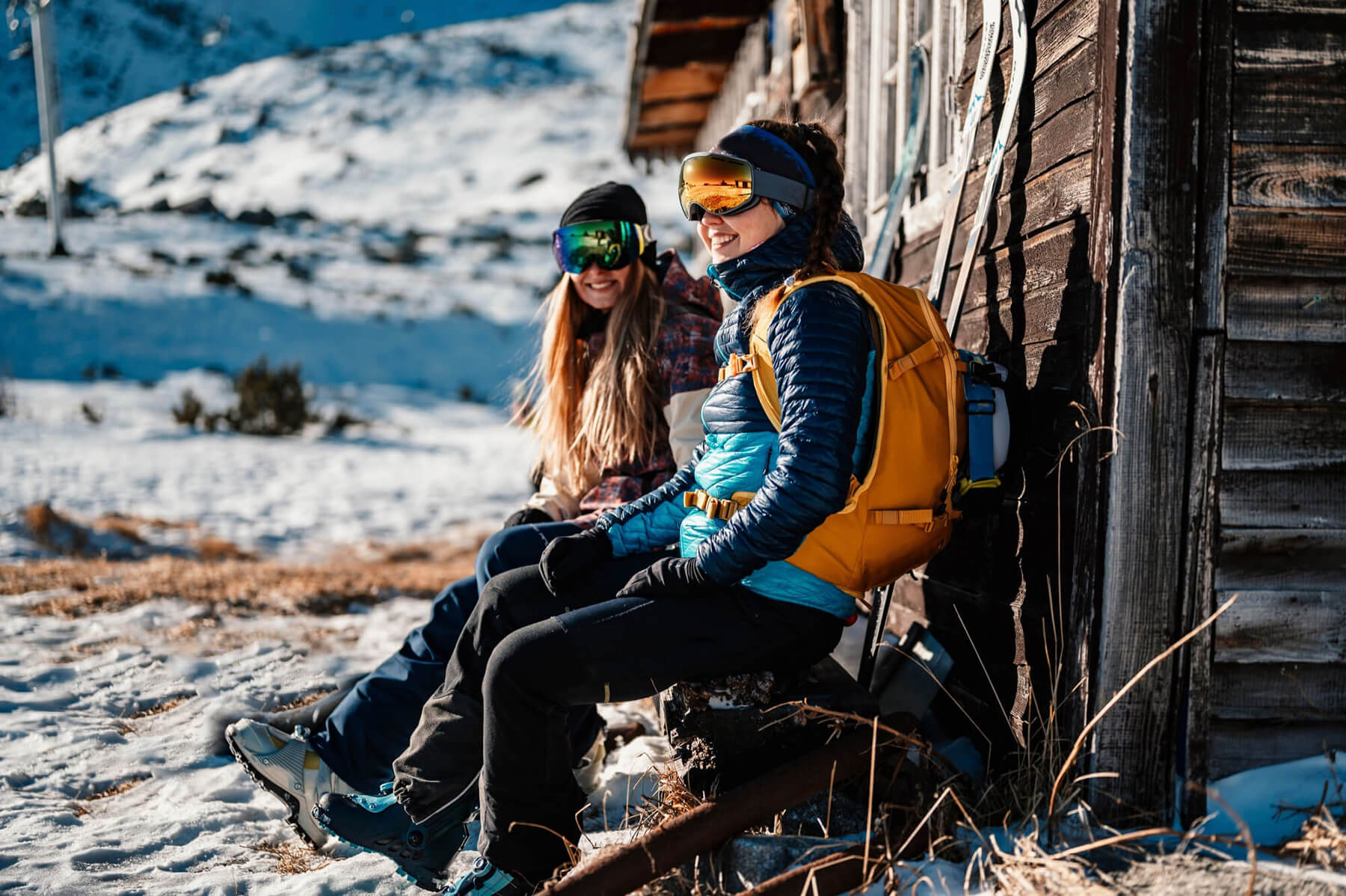
Touring skis for ladies
A category of its own are special ladies' skis. It makes sense, since the anatomy of body of men and female are different. Women have more upright posture and the centre of gravity is shifted to the rear, that is why the ski bindings are mounted closer to the tips of the skis. Ladies's touring skis are lighter in general, because women are lighter than men.
As you can see, there's a plenty of touring skis to choose from for all kinds of activities. By now, do you know which ones are the best fit for you?
 Musical Instruments
Musical Instruments



 Water Sports
Water Sports




 ee
ee

